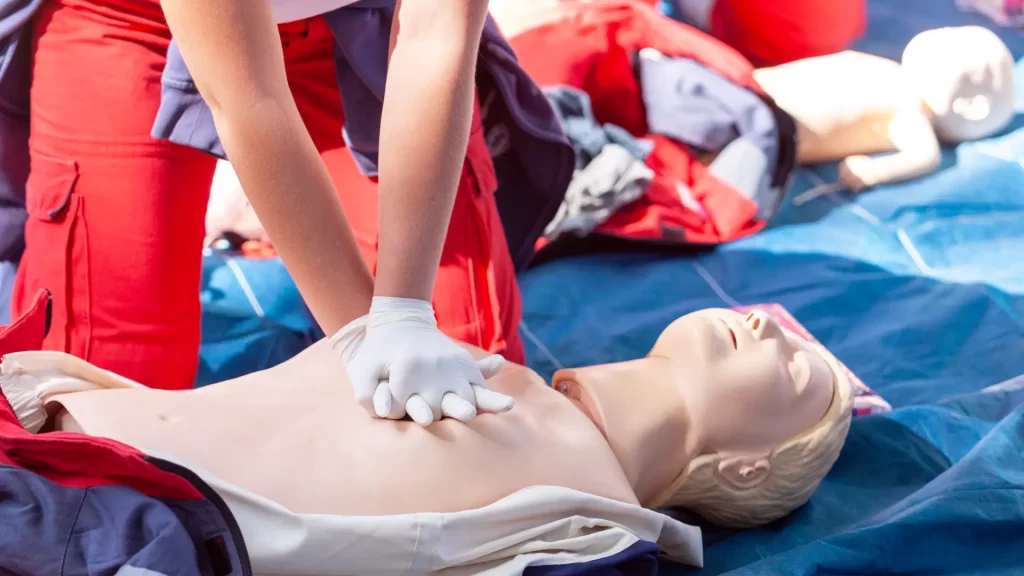
Knowing CPR (Cardiopulmonary Resuscitation) is a valuable skill that can mean the difference between life and death. Early intervention with CPR can significantly increase the chances of survival for someone experiencing cardiac arrest. However, CPR techniques vary depending on the age of the person needing help. This article will provide a comprehensive guide to CPR Techniques for Different Age Groups, empowering you to act effectively in an emergency.
An adult body has a different physiology than a child’s body, and an infant’s body is even more delicate. The size and fragility of bones, the depth of the chest cavity, and the appropriate compression force all differ significantly across age groups. Using the wrong technique could be ineffective or even cause injuries.
Here’s a breakdown of the key considerations for CPR techniques by age group:
Infants (Newborn to 1 year): Infants require the gentlest approach with minimal pressure. Techniques involve using only two fingers for chest compressions on the center of the chest.
Here’s a step-by-step guide to performing CPR on Adults:
Scene Safety: As with adults, ensure your safety and the safety of others before approaching the child. Look for any immediate dangers like electrical hazards, traffic, or drowning hazards (if near water). If the scene is unsafe, remove the child from danger if possible without putting yourself at risk.
Check for Responsiveness: Gently tap the child’s shoulder and ask loudly, “Are you okay?” in a clear and firm voice. If the child doesn’t respond or show any signs of movement, shout for help from bystanders and call emergency services immediately.
Position the Victim: Lay the child flat on their back on a firm, stable surface. If the child is on a soft surface like a couch, carefully move them to a firmer surface suitable for CPR.
Open the Airway: Use the head-tilt chin-lift maneuver specifically adapted for children. Tilt the head back slightly by placing one hand on the forehead and gently applying pressure. With your other hand, lift the chin by placing two fingers under the bony part of the lower jaw and lifting it slightly. Avoid tilting the head back too far, as this can block the airway.
Check for Breathing: Look, listen, and feel for normal breathing for no more than 10 seconds. Look for chest movement, listen for breaths, and feel for air coming out of the nose or mouth. If the child is not breathing normally (gasping, shallow breaths, or no breaths at all), begin CPR.
Chest Compressions for Children: Locate the center of the chest, which is the lower half of the breastbone. The placement of hands for chest compressions depends on the child’s size:
Push down firmly and evenly by about 2 inches (5 cm) at a rate of 100-120 compressions per minute. Imagine pushing down about one-third of the depth of the chest cavity. Use your body weight to deliver effective compressions, but avoid bouncing on the chest. After each compression, allow the chest to rise completely before pushing down again.
Rescue Breaths for Children:
Continue CPR for Children: Continue cycles of 30 chest compressions to 2 rescue breaths until help arrives, the child starts breathing normally again, or you become exhausted. Ideally, continue CPR until professional medical help takes over.
CPR for infants requires the most delicate approach due to their extremely fragile bodies. Here’s a step-by-step guide:
In an emergency situation where someone experiences cardiac arrest, immediate CPR intervention can significantly increase their chances of survival. But with so many CPR training options available in Phoenix, how do you find the best class for you?
Here’s what to look for when choosing a CPR training class in Phoenix:
CPR is a lifesaving skill that everyone should consider learning. By understanding the CPR Techniques for Different Age Groups, you can be prepared to act effectively in an emergency situation. Remember, early intervention with CPR can significantly increase the chances of survival for someone experiencing cardiac arrest.

Proud to be an American Heart Association Training Site aligned with GoRescue Birmingham, AL
Copyright 2025© CPR Classes Near Me